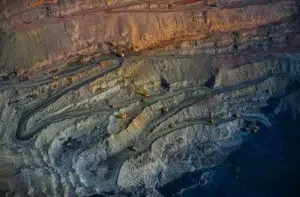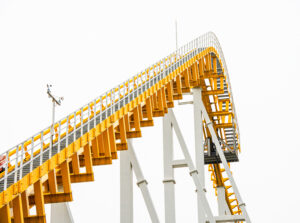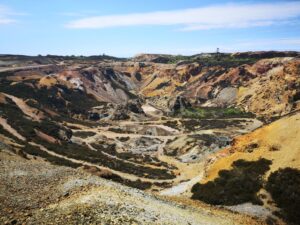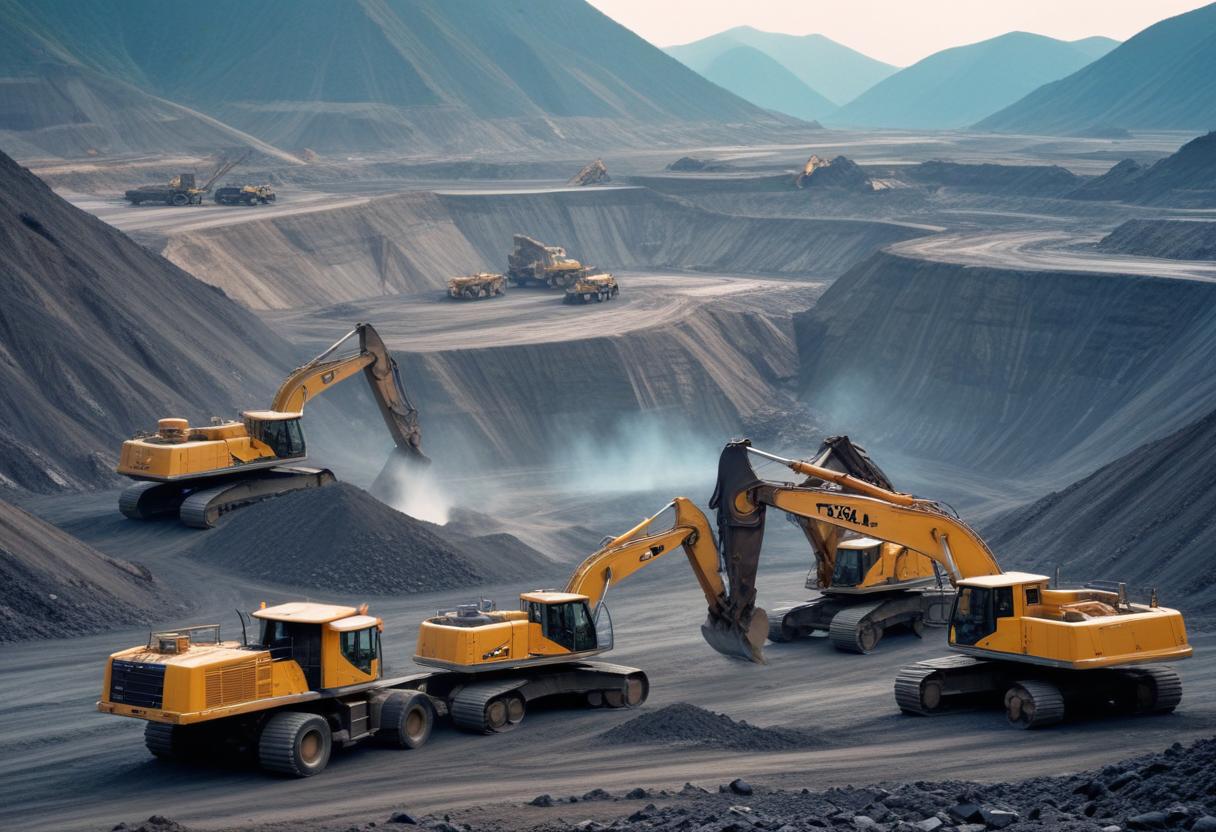What Are ASX Iron Ore Shares?
ASX iron ore stocks represent the shares of various companies that are involved in the exploration, mining, and production of iron ore. These companies play a vital role in various ongoing mining projects that involve iron ore materials which is also an essential component for steel production. This is a highly sought-after resource that is needed across different industries such as construction, automotive, and infrastructure.
Currently, investing in iron ore shares is an appealing option to investors looking to develop their portfolio, especially given the country's abundant resources and expertise in mining. Some mining companies listed on the ASX are some of the world's largest iron ore producers. They offer investors a glimpse into the profitable iron ore market.
Why Invest in Iron Ore Stocks?

Iron ore price
The iron ore production has been resilient despite economic challenges. One reason for this is the demand for iron ore in steel production. As economies continue to develop, especially the Chinese economy and a significant focus on the regions of South America, the need for steel and iron ore remains high.

Market Cap
Australia's iron ore miners are globally competitive making their market capitalisation impressive. Certain companies like the Fortescue Metals Group, Rio Tinto, and Mount Gibson Iron stand to gain a lot from mining the available natural resources.

Supply chain
The key focus of these companies in the market is building a better network of iron ore services with efficient port facilities to transport the produce to other countries.
Get the Latest Stock Market Insights for Free with
Stocks Down Under & Pitt Street Research
Join our newsletter and receive exclusive insights, market trends, investment tips, and updates delivered directly to your inbox. Don't miss out – subscribe today and make informed investment decisions.
What Might the Future Hold for Australia's Iron Ore Industry?
The future of Australia’s iron ore mining industry looks highly promising as the market is moving towards productivity. Despite some concerns over the ongoing deteriorating economic conditions in some crucial markets such as China, Australia is still a top iron ore producer in the world. The increased global demand for high-grade iron ore with fewer impurities, combined with sustainable mining practices, will drive the sector forward.
Moreover, there is a constant push towards reducing carbon emissions, and environmental sustainability considerations will influence the mining practices undertaken by the companies. The Australian iron ore sector is likely to see a rise in investments. This will lead to a decreased carbon footprint of mining services, making iron ore stocks more appealing to investors.
The share price performance of the iron ore which is one of the valuable mineral resources, provides the Australian investors with a considerable amount of revenue. As the market cap of these companies is significantly high, both the dividend investor and the dividend payers are looking at lucrative returns.
3 Best ASX Iron Ore Stocks to Buy Now in 2024
Fortescue (ASX: FMG)
Considered one of the largest iron ore miners in Western Australia, Fortescue Metals Group is a global player in the iron ore industry. The company has its operations focused in the Pilbara region of Western Australia, where it operates some of its flagship iron ore assets...
Grange Resources (ASX: GRR)
Grange Resources is another iron ore miner, who is a key player in Australia’s iron ore sector. They have their crown jewel project located at Savage River operations in Tasmania. This multinational mining company operates in producing top quality iron ore pellets which is a form of iron ore that is used in steel production...
Mount Gibson Iron (ASX: MGX)
Mount Gibson Iron is another large company in the Australian iron ore industry, primarily focused on iron ore production in the northwest of Australia. The company operates several mines, including the Shine Iron Ore Project. They also have a strong presence in the export market....
3 Best ASX Iron Ore Stocks to Buy Now in 2024
The Role of Iron Ore in the Steel Industry and the Rise of ESG Considerations
The iron ore industry and the steel industry are inextricably linked, given that iron is a key material in steel production. The global demand for steel continues to drive the iron ore industry, with China leading as the largest producer and consumer of steel. However, in recent years, the steel industry has faced increasing pressure to reduce its carbon emissions and energy consumption.
How to Choose the Right ASX Iron Ore Stock?
Choosing the right ASX iron ore stock depends on several factors. This includes looking into the company’s financial stability in crucial periods, and their potential growth in the future. Investors should look for companies with strong iron ore projects and a reliable supply chain network. Additionally, investors need to understand the iron ore prices and how they impact the company’s profitability to make informed investment decisions. The stocks mentioned have a great market capitalization with various flagship projects underway.
For example, companies with low cash costs and efficient mining services are better positioned to face unexpected price fluctuations. It's also crucial to consider the company's diversified mining activities to choose the right iron ore stock that aligns with the investor's strategy. Many mining companies such as BHP Group and Rio Tinto are involved in extracting other metals and minerals along with the extraction of iron, which provides additional revenue streams.
How to Invest in Iron Ore in Australia?
Investing in iron ore stocks on the ASX is a straightforward process. Investors can buy shares of iron ore miners directly through a broker or online trading platform. It's important to research the company’s performance, share price trends, and market position before investing.
For investors who prefer a diversified approach, investing in an iron ore ETF or even in a diversified mining company ETF can provide exposure to the mining industry. There are going to be risks while considering investing in iron ore shares which is a volatile stock. Diversifying the investment portfolio will balance out the revenue and risk ratio so that the investment proves to be profitable.
Are ASX Iron Ore Shares a Good Investment?
Investing in ASX specifically the top iron ore stocks, can be a great opportunity for investors looking to get exposure into the materials sector. Australia's iron ore producers are some of the most profitable in the world. Their operations in the existing rich deposits make them a well-established mining industry. While iron ore prices can fluctuate sharply, the long-term demand for steel in the construction industry makes iron ore stocks a solid investment choice.
Considering these factors, investors should be aware of the risks, including the volatility in iron ore prices, unexpected geopolitical tensions, and environmental concerns. The future of iron ore production will also depend on how mining companies adapt to trends in the market demands.
FAQs on Investing in Iron Ore Stocks
Iron ore prices are influenced by various factors, including global steel demand, overall economic growth, and supply dynamics. Changes in Chinese economy, which consumes more than half the world's iron ore for its steel production, also significantly impact iron ore prices.
Our Analysis on ASX Iron Ore Stocks
Here Are The Top 5 Websites for Stock Market News & Analysis in Australia
For Australian investors and traders, staying informed about stock market news is essential for making smart decisions. With a range…
Iron Ore Price Forecast 2025: Is Iron Ore a Good Investment?
The Iron Ore Price Forecast is probably the most watched price forecast of any commodity in Australia. This is because…
After a 60% plunge in 4 months, are Mineral Resources (ASX:MIN) and its lithium peers on the rebound?
Mineral Resources (ASX:MIN) avoided much of the lithium price rout, until a few months ago. For investors, the company’s diversification…
Here are 5 key takeaways from the FY24 results of BHP that you may’ve missed
5 key takeaways from the FY24 results of BHP 1. Copper will be where ‘it is at’ from hereon…
Here are 4 economic indicators that impact stocks and investors must pay attention to
There are several economic indicators that impact stocks, both on the ASX and internationally. Whenever data is released, it can…





